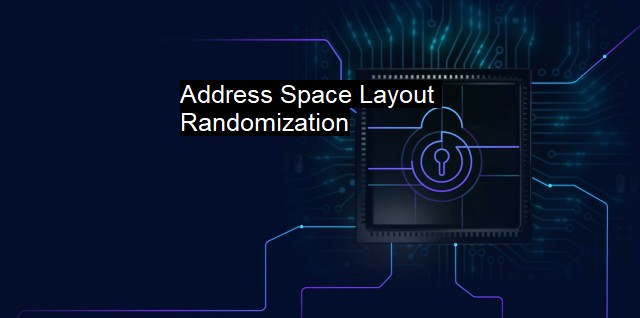What is Address Space Layout Randomization?
Defending Networks against Cybercriminals: The Importance of Address Space Layout Randomization in Cybersecurity and Antivirus Strategies
Address Space Layout Randomization (ASLR) is a cybersecurity concept that involves random arrangement of the address space positions of core data areas in a process. This includes areas such as the base of the executable area, position of libraries, heaps, and stack. ASLR, initially implemented in Linux, is now a feature of almost every major operating system including Windows, iOS, macOS, and Android. Primarily a defense mechanism used in various forms of software, it aims to mitigate the risk of a successful cyberattack by obscuring internal data and keeping it shifting dynamically.The primary objective of ASLR is to prevent a hacker from predicting target addresses on a system's memory layout. In traditional fixed-address programming, core data areas are often found at preset addresses, making it easy for attackers to exploit known vulnerabilities in the code. This can cause a series of potential security problems including unauthorized data access, system crashes, and arbitrary code execution.
The basis of ASLR involves arranging these areas in memory in a stochastic or randomized manner. When a process is executed, the location of this code and other areas in memory changes randomly, making it significantly harder for an attacker to predict where to find suitable exploit code. From a cybersecurity perspective, this randomness in memory locations adds an additional layer of complexity and unpredictability, thereby deterring attackers from exploiting system vulnerabilities.
ASLR is an efficiency-driven tool for combating vulnerabilities lurking in a system. It capitalizes on the inability of a potential attacker to consistently predict virtual addresses reliably, especially in case of buffer overflow and stack overflow vulnerabilities. Buffer overflows often allow hackers to control the memory organization of software, but with random addresses, the chances of executing a successful attack are drastically decreased.
Despite the massive benefits of ASLR, it is not foolproof and does not claim to eradicate the vulnerabilities it is designed to checkmate. Advanced and sophisticated methods of attack can bypass ASLR configurations. There are several known strategies for getting around ASLR, often through information leaks or the exploitation of other software vulnerabilities. Some hackers might try to make multiple exploits until they hit a successful strike or bypass the security measure through a technique known as Return-oriented Programming (ROP), thereby still exploiting the underlying vulnerability.
There is also the downside of stochastic degradation of performance. It is a concern because mapping random areas of memory has the potential to lead to scattered unreleased memory and higher fragmentation, eventually leading to degraded performance. ASLR must balance its function with maintaining memory-use efficiency in a process to a certain degree.
In terms of antivirus protection, Address Space Layout Randomization forms part of bigger defensive strategies, often merging with others in mitigating security breaches. It is important to understand that ASLR is not a disparate part of system security but works in amalgamation with other security methodologies, and traditional antivirus software might not pay direct attention to it.
It’s worth mentioning that ASLR is designed as a deterrent, not a total solution. Technically, one successful exploit negates the efficacy of ASLR. But then, it's harder to succeed in exploiting a vulnerability with ASLR restrictions than without.
To sum up, Address Space Layout Randomization is an important line of defense developed to protect systems from getting exploited by unexpected external infiltrations. It greatly reduces the attacker's ability to execute deterministic code to sabotage the system. IT experts also emphasize that ASLR alone does not ensure complete security and should be incorporated within a suite of protective measures. As we build more secure systems and delve deeper into the future of cyber risk, methodologies like ASLR extend the infrastructure necessary to sustain it. The area of cybersecurity is a multi-pronged engagement, and ASLR is a vital cog in that machine.

Address Space Layout Randomization FAQs
What is address space layout randomization (ASLR)?
ASLR is a cybersecurity technique used to prevent various types of memory-based attacks, such as buffer overflow and heap spray. It works by randomly arranging the positions of critical system components in a device's memory every time it boots up.How does ASLR enhance cyber security?
ASLR enhances cybersecurity by making it difficult for attackers to predict the location of critical system components (such as libraries and executable files) in a device's memory, making it harder to exploit vulnerabilities in them.Can ASLR prevent all types of cyber attacks?
No, ASLR is not a foolproof solution that can prevent all types of cyber attacks. However, it is an effective technique to mitigate the risks of memory-based attacks that exploit vulnerabilities in software applications.Is ASLR implemented in all antivirus software?
ASLR is a feature that is commonly supported by modern operating systems and can be implemented by antivirus software to prevent memory-based attacks. However, its implementation may vary from software to software, and some antivirus software may not support this feature.| | A | | | B | | | C | | | D | | | E | | | F | | | G | | | H | | | I | | | J | | | K | | | L | | | M | |
| | N | | | O | | | P | | | Q | | | R | | | S | | | T | | | U | | | V | | | W | | | X | | | Y | | | Z | |
| | 1 | | | 2 | | | 3 | | | 4 | | | 7 | | | 8 | | |||||||